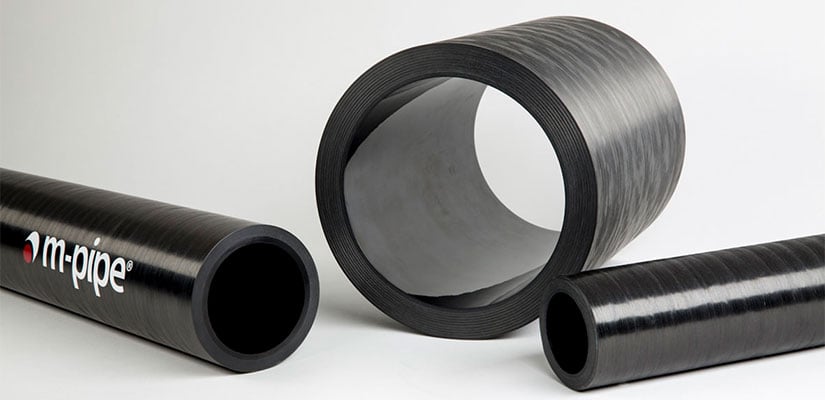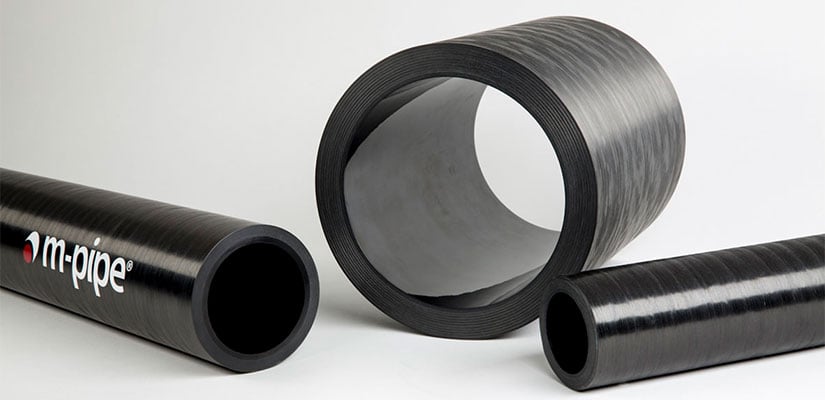

Magma Global produces the m-pipe and s-pipe, which are composite pipes designed for use in extreme high pressure and high temperature applications.
Looking back at 2015, we've noticed a number of changes regarding the use of composites in the oil and gas drilling and fracturing business. We thought we should take a look at these changes, to acknowledge the contribution that composites make to the industry today.
Composite Piping for Drilling
Drilling companies have led an increase in the use of composite piping in deep-water drilling scenarios because composites can stand up to the harsh, often corrosive, ocean environment. Composite pipes also create drilling systems with a lighter weight. According to Lucintel, the oil and gas and chemical segments of the piping industry account for more than 55% of the fiber-reinforced plastic piping in the US today.
Composite piping's impact, however, is global. Saipem SA out of Milan, Italy, finished laying two pipelines in the Guara and Lupa NE gas line in Brazil. They used a composite, flexible TCP which reached down 2,130 meters, a record for composite piping. It reached the seabed floor in a record 2.5 hours because it required less buoyancy support than traditional, steel reinforced flexible piping. Traditional piping would have required 12 or more hours to reach the seabed.
Recently, Magma Global, Ltd. out of Portsmouth, UK introduced an s-pipe with the same qualities as the m-pipe but in smaller sizes up to 76.2 mm and with a pressure rating of 138MPa. Magma Global designed this new piping for use in extreme high pressure and high temperature applications with fatigue resistance. Magma made its new s-pipe from Victrex Polymer Solutions' (out of Lancashire, UK) polyetheretherketone (PEEK) and then strengthened the PEEK by a proprietary mix of fibers resistant to high strain.
Composites in Fracking
In addition, in the US, hydraulic "fracking" leads an energy production resurgence. The Society of Petroleum Engineers says that fracking accomplished 60% of all new oil and gas drilling since 2012 and that companies conducted 1 million of 2.5 million frackings here in the US.
The US Energy Information Administration (EIA) anticipated that energy output in the US would grow from 6.89 billion barrels per day in 2012 to 8.15 billion barrels per day in 2014. In June 2015, EIA said that the US produced 9 billion barrels of crude every day.
Composites are instrumental in the fracking process. Drillers conduct fracking in places like shale deposits, where fracking yields higher volumes of product than traditional drilling. Glass fiber and epoxy or phenolic resin balls react better to high pressure and high temperatures than traditional plastic or salt balls.
In 2002, filament wound glass fiber and epoxy resin made up the composite bridge plugs. They could withstand pressures up to 8,000 psi and temperatures up to 250° Fahrenheit. The composite bridge plugs of today withstand pressures up to 12,000 psi and temperatures up to 300° Fahrenheit.
An example video of a composite bridge and frac plug from Forum Energy Technologies.
The goal of the fracking process is to increase output at high temperatures and high pressure. If companies can also reduce the amount of time it takes to work each well from 8 days to two that would mean that the fracking crew can work four times as many mines. This is especially important in the US where the need for fracking crews often outweighs the number of available crews. If each crew can "frac" four times the number of wells that it currently handles, this would greatly increase the efficiency of the crews. Composites, with their high pressure and high temperature resistance, shave time off projects and are instrumental to this goal.
Interested in learning more about the use of composites in fracking? Check out "Composites Boom from Hydraulic Fracturing?" in Composites World by Ginger Gardiner in 2014.




